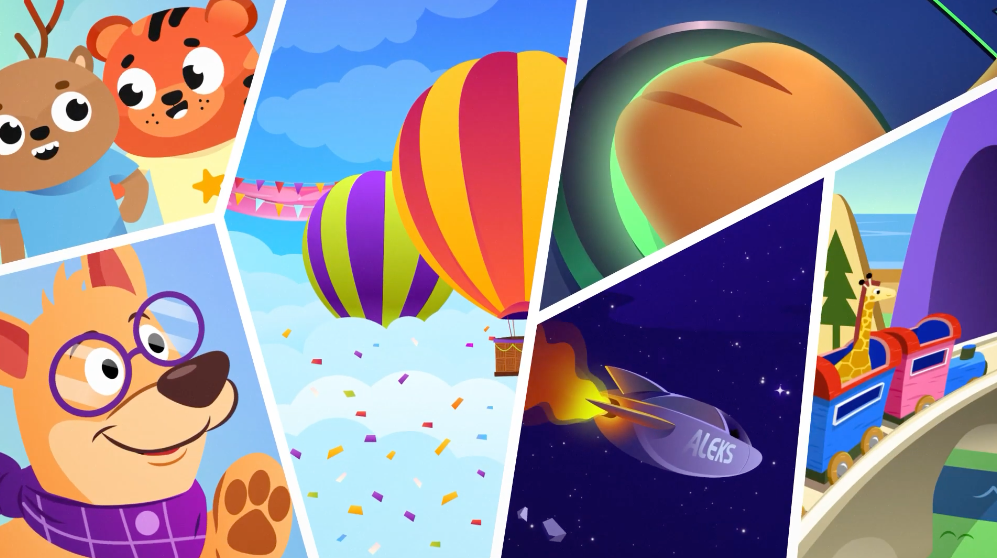Watch Party is a Q&A style interview series where we discuss a recent Demo Duck video production with the team that brought it to life.
The project team of Marissa Davis, Chris Reynolds and Aimé DeLattre sat down to chat about their approach to creating a delightful teaser video for McGraw Hill's curriculum-based math learning game ALEKS Adventure. Let's learn how it all added up...
It's a unique challenge to make a teaser video that emulates gameplay, but still feels elevated to intrigue a wider audience.
Chris: As a huge video gaming nerd, there's an art to the game teaser video. Actual gameplay has to be designed, animated and programmed in a very specific way to ensure it functions properly, while a teaser trailer is meant to emulate the experience and feeling you want players to actually have. The latter was something we really wanted to capture, and that meant it would require some recreation of the ALEKS Adventure world within our production process.
Aimé: At the start of the project, Chris made a great comparison of Bob's Burgers the TV show versus The Bob's Burgers Movie when it comes to design and motion differences.
Chris: Or Hey Arnold! The Movie.
Marissa: Or Rugrats in Paris. We could go all day here.
Aimé: I know. But the idea of this comparison is that there's a certain use of shadows, depth, movement and perspective that allow the movies to feel a little more elevated—while still not detracting from how much you like the show. This was our mindset when thinking about how to draw from actual gameplay and figure out the right way to depict it visually.
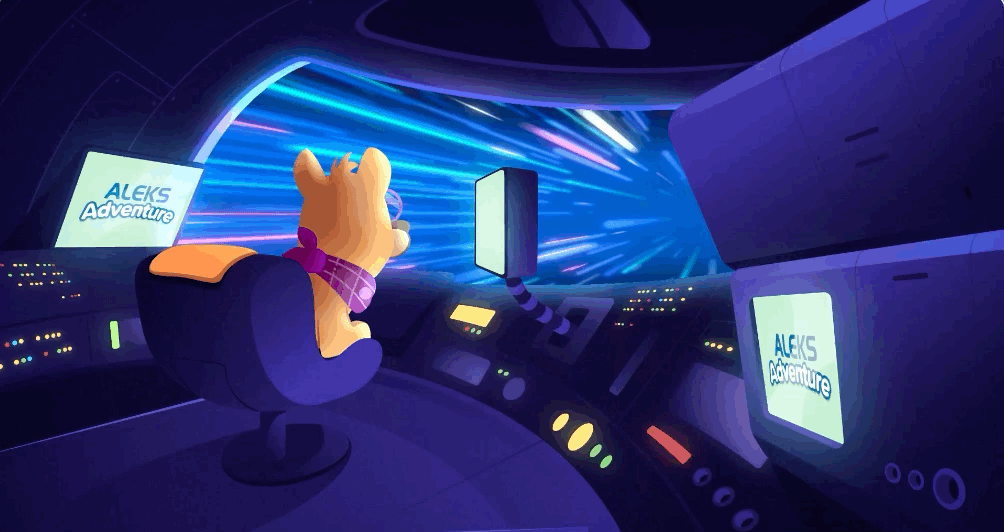
How did you approach bringing the in-game elements into the video?
Marissa: Well, it started at the very beginning when we were still brainstorming. The client allowed us an opportunity to pitch different concepts, and we needed to make sure that each of them would still give us an opportunity to be true to the game. For example, we need concepts that would allow us to seamlessly show the different "worlds" from the game. Some of our concept ideas in the brainstorm included a fake movie trailer, even a fun car racing video with art direction inspired by flat colorful vintage F1 posters. The winning idea stemmed from exploring a new way to learn—transcending the feeling of being cooped up in a classroom and instead blasting off to learn in a new way. Each concept idea included ways we would visually interpret gameplay, so once they selected the winning concept we were set up well to go into production.
Aimé: McGraw Hill provided us with a working file folder for game designs for each grade level's curriculum. Different backgrounds, different characters. We knew that they wanted a teaser video that mainly showed math, so we needed to find visuals that were math-focused and then create a story that weaved those together. We were then able to use those assets as a reference, and then add flourishes to designs. Adding additional shadows and highlights helped level up the depth and design of our characters and environments. For example, there was a specific scene where we have our character standing there while "the user" goes through clothing options. This scene in the game is more static, so we added an idle animation to our character and and secondary motion to their ears and tail. To further breathe life into this character, we also added some reaction expressions as their outfit selection changes.
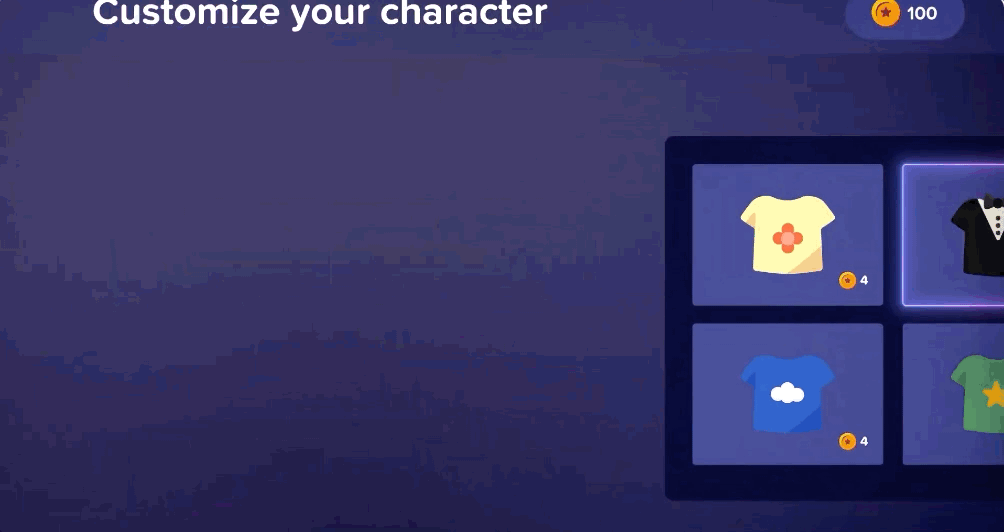
Marissa: It's all about finding those moments that give it that "Similar, but different" elevation we were looking for.
Chris: Oh, and I had to do some secondary research on my own to learn about how math is now taught. Which isn't usually on my to-do list at work. I learned what base10 blocks are, and how they are used to ensure that viewers recognized the lesson at the core of these fun visuals.
Marissa: Exactly. Students often see how teachers follow a flow of a problem being solved and then internalize that. We wanted the math sequences to feel consistent and not an abrupt departure.
Chris: We knew teachers would appreciate that effort and detail, so we wanted to put in that extra work.
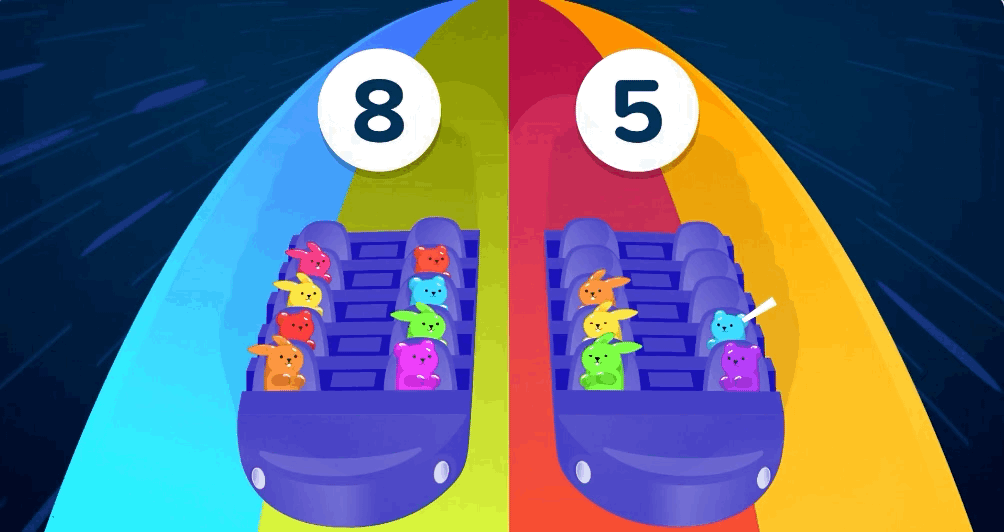
What about using the sounds from the game?
Marissa: This was probably the part that required the most creative solves. Typically, the audio tracks that we use for projects have "stems," which give us the freedom to interact with the different elements of the track. Some of the music tracks provided for the project weren't designed with this customization in mind. The sound designer on the project Facundo (Capece) was able to lean into some of the fun action of the video to help overcome some of our sound limitations. For example, having sound effects carry a transition into a new scene—or sound design to make the music track sound like it's underwater once the gummy bears ride their roller coaster into the ocean.
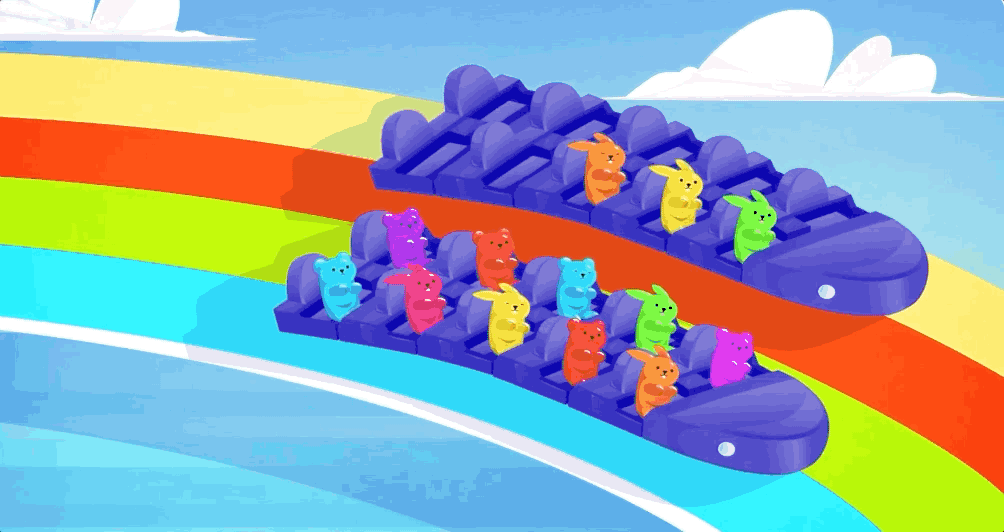
That brings me to perhaps my most important question. Are the gummy bears OK after they crash down into the water on their rainbow roller coaster?
Aimé: That's the cliffhanger.
Marissa: I mean, that's why they call it a teaser trailer, right?
Chris: Well, if it helps with reassuring you and our readers—remember this isn't earth. In the video, we're traveling accross the galaxy to various learning planets. And in this world, one can reasonably assume that it's a magic ocean. When the gummy bears break the surface of the water, I'm guessing that bubbles essentially envelop their heads—creating helmets that help them breathe comfortably under water.
Aimé: Gummy bears love the ocean.
